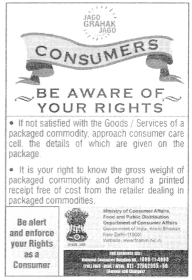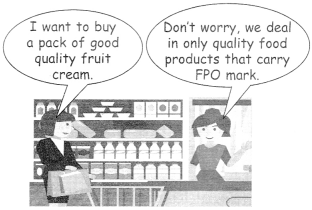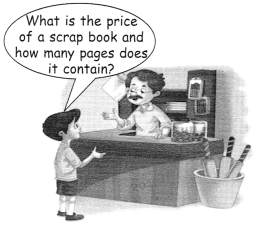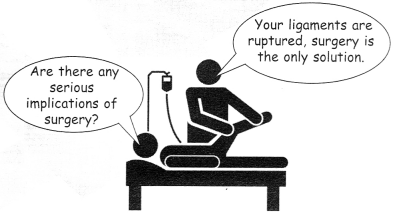We have compiled the NCERT MCQ Questions for Class 10 Economics Chapter 4 Globalisation and the Indian Economy with Answers Pdf free download covering the entire syllabus. Practice MCQ Questions for Class 10 Economics with Answers on a daily basis and score well in exams. Refer to the Globalisation and the Indian Economy Class 10 MCQs Questions with Answers here along with a detailed explanation.
Globalisation and the Indian Economy Class 10 MCQs Questions with Answers
Question 1.
Multinational corporations have succeeded in entering global markets through
(a) WTO
(b) UNO
(c) UNESCO
(d) none of the above
Answer
Answer: (a) WTO
Question 2.
What attracts an MNC?
(a) Cheap labour
(b) Ready demand for the product
(c) Both (a) and (b)
(d) None of the above
Answer
Answer: (c) Both (a) and (b)
Question 3.
Investment means spending on
(a) factory building
(b) machines
(c) equipments
(d) all the above
Answer
Answer: (d) all the above
Question 4.
Globalisation results in
(a) inflow of labour from abroad
(b) inflow of capital from abroad
(c) inflow of tourists from abroad
(d) all the above
Answer
Answer: (b) inflow of capital from abroad
Question 5.
Which of the following contributes to globalisation?
(a) internal trade
(b) external trade
(c) large scale trade
(d) small scale trade
Answer
Answer: (b) external trade
Question 6.
Benefits enjoyed by companies who set up production units in the SEZs are:
(a) they do not have to pay taxes for some years
(b) reduction in excise duty
(c) reduced tariffs and barriers
(d) none of the above
Answer
Answer: (a) they do not have to pay taxes for some years
Question 7.
Integration of markets means
(a) operating beyond the domestic markets
(b) wider choice of goods
(c) competitive price
(d) all the above
Answer
Answer: (d) all the above
Question 8.
Special Economic Zones (SEZ) developed by the Government of India aim
(a) to attract foreign companies to invest in India
(b) to encourage small investors
(c) to encourage regional development
(d) none of the above
Answer
Answer: (a) to attract foreign companies to invest in India
Question 9.
Which one of the following is not true regarding the World Trade Organisation?
(a) It allows free trade to all countries without any trade barriers.
(b) Its aim is to liberalise international trade.
(c) It establishes rules regarding internaional trade.
(d) WTO rules have forced the developing countries to remove trade barriers.
Answer
Answer: (a) It allows free trade to all countries without any trade barriers.
Question 10.
Which one of the following is not true regarding impact of globalisation of India?
(a) It has created jobs in the service sector.
(b) People with education, skill and wealth have not been benefited.
(c) Benefits of globalisation are not shared equally.
(d) Labour laws are not implemented properly and workers are denied their rights.
Answer
Answer: (d) Labour laws are not implemented properly and workers are denied their rights.
Question 11.
Which one of the following is a major benefit of joint production between a local company and a Multi-National Company?
(a) MNC can bring latest technology in the production
(b) MNC can control the increase in the price
(c) MNC can buy the local company
(d) MNC can sell the products under their brand name
Answer
Answer: (a) MNC can bring latest technology in the production
Question 12.
Which one among the following is a far reaching change in the policy made in India in 1991?
(a) Removing barriers or restrictions set by the government which is known as liberalisation.
(b) Put barriers to foreign trade and foreign investments.
(c) Restrictions set by the government to protect the producers within the country from foreign competition.
(d) By giving protection to domestic producers through a variety of means.
Answer
Answer: (a) Removing barriers or restrictions set by the government which is known as liberalisation.
Question 13.
Which one of the following has benefited least because of globalisation in India?
(a) Agriculture Sector
(b) Industrial Sector
(c) Service Sector
(d) Secondary Sector
Answer
Answer: (a) Agriculture Sector
Question 14.
By 2006, how many countries were the members of the World Trade Organisation?
(a) 139
(b) 149
(c) 159
(d) 169
Answer
Answer: (b) 149
Question 15.
Entry of MNCs in a domestic market may prove harmful for:
(a) all large scale producers.
(b) all domestic producers.
(c) all substandard domestic producers.
(d) all small scale producers.
Answer
Answer: (d) all small scale producers.
Question 16.
The most common route for investments by MNCs in countries around the world is to:
(a) set up new factories
(b) buy existing local companies
(c) form partnerships with local companies
(d) None of these
Answer
Answer: (a) set up new factories
Question 17.
Removing barriers or restrictions set by the government is known as :
(a) privatisation
(b) globalisation
(c) liberalisation
(d) socialisation
Answer
Answer: (c) liberalisation
Question 18.
Taxes on imports is an example of :
(a) terms of trade
(b) collateral
(c) trade barriers
(d) foreign trade
Answer
Answer: (c) trade barriers
Question 19.
The most common route for investments by MNCs in countries around the world is to:
(a) set up new factories
(b) buy existing local companies
(c) form partnerships with local companies
(d) None of these
Answer
Answer: (a) set up new factories
Question 20.
Which one of the following categories refers to investment?
(a) The money that is spent to buy assets such as land, building, machines, etc.
(b) The money that is spent on religious ceremonies.
(c) The money that is spent on social customs.
(d) The money that is spent on household goods.
Answer
Answer: (a) The money that is spent to buy assets such as land, building, machines, etc.
Question 21.
Why do MNCs set up offices and factories in more than one nation ?
(a) The cost of production is high and the MNCs can earn profit.
(b) The cost of production is low and the MNCs undergoes a loss.
(c) The cost of production is low and the MNCS can earn greater profit.
(d) The MNCs want to make their presence felt globally.
Answer
Answer: (c) The cost of production is low and the MNCS can earn greater profit.
Question 22.
Liberalisation refers to
(a) freeing the economy from direct control
(b) putting an end to various restrictions
(c) opening up the economy
(d) all the above
Answer
Answer: (d) all the above
Question 23.
FDI (Foreign Direct Investment) attracted by globalisation in India belongs to the
(a) World Bank
(b) multinationals
(c) foreign governments
(d) none of the above
Answer
Answer: (b) multinationals
Question 24.
When was the WTO established?
(a) 1985
(b) 1995
(c) 2000
(d) 2005
Answer
Answer: (b) 1995
Question 25.
Which of the following factors has not facilitated globalisation?
(a) Technology
(b) Liberlisation of trade
(c) WTO
(d) Nationalisation of banks
Answer
Answer: (d) Nationalisation of banks
Question 26.
Globalisation leads to rapid movements of the following between countries :
(a) goods and services
(b) investments
(c) people
(d) all the above
Answer
Answer: (d) all the above
Question 27.
Globalisation so far has been more in favour of:
(a) developed countries
(b) developing countries
(c) poor countries
(d) none of the above
Answer
Answer: (a) developed countries
Question 28.
Which has played a big role in spreading globalisation?
(a) Information technology (IT)
(b) Transport technology
(c) Both (a) and (b)
(d) None of the above
Answer
Answer: (c) Both (a) and (b)
Question 29.
Cheaper imports, inadequate investment in infrastructure lead to
(a) slowdown in agricultural sector
(b) replace the demand for domestic production
(c) slowdown in industrial sector
(d) all the above
Answer
Answer: (d) all the above
Question 30.
Globalisation results in
(a) lesser competition among producers
(b) greater competition among producers
(c) no change in competition among producers
(d) none of the above
Answer
Answer: (b) greater competition among producers
Question 31.
Which sector has not benefited by the policy of globalisation?
(a) Agricultural sector
(b) Manufacturing sector
(c) Service sector
(d) All the above
Answer
Answer: (a) Agricultural sector
Question 32.
Globalisation has led to improvement in
(a) choice to consumers
(b) quality of goods and services
(c) foreign investment
(d) all the above
Answer
Answer: (d) all the above
Question 33.
Fair globalisation refers to ensuring benefits to:
(a) labourers
(b) producers
(c) consumers
(d) all the above
Answer
Answer: (d) all the above
Hope the information shed above regarding NCERT MCQ Questions for Class 10 Economics Chapter 4 Globalisation and the Indian Economy with Answers Pdf free download has been useful to an extent. If you have any other queries of CBSE Class 10 Economics Globalisation and the Indian Economy MCQs Multiple Choice Questions with Answers, feel free to reach us so that we can revert back to us at the earliest possible.
















































